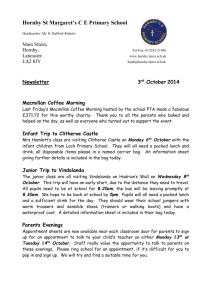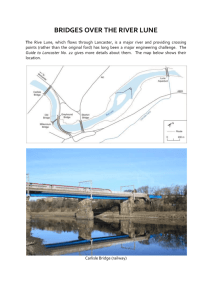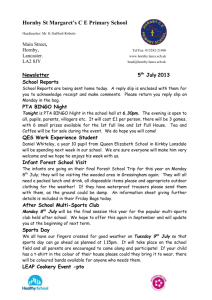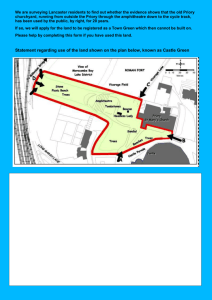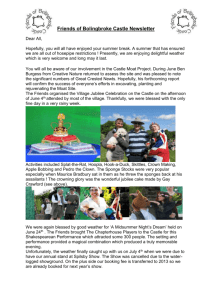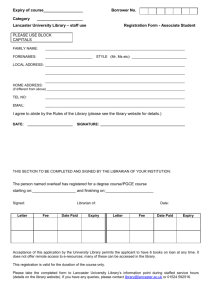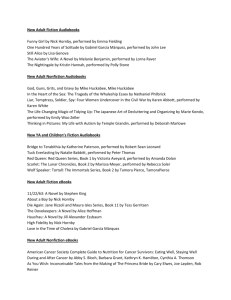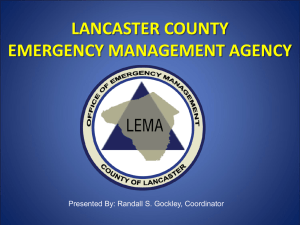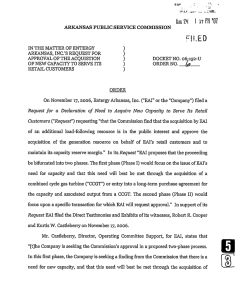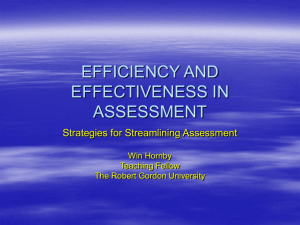Hornby - Lancaster Civic Society
advertisement
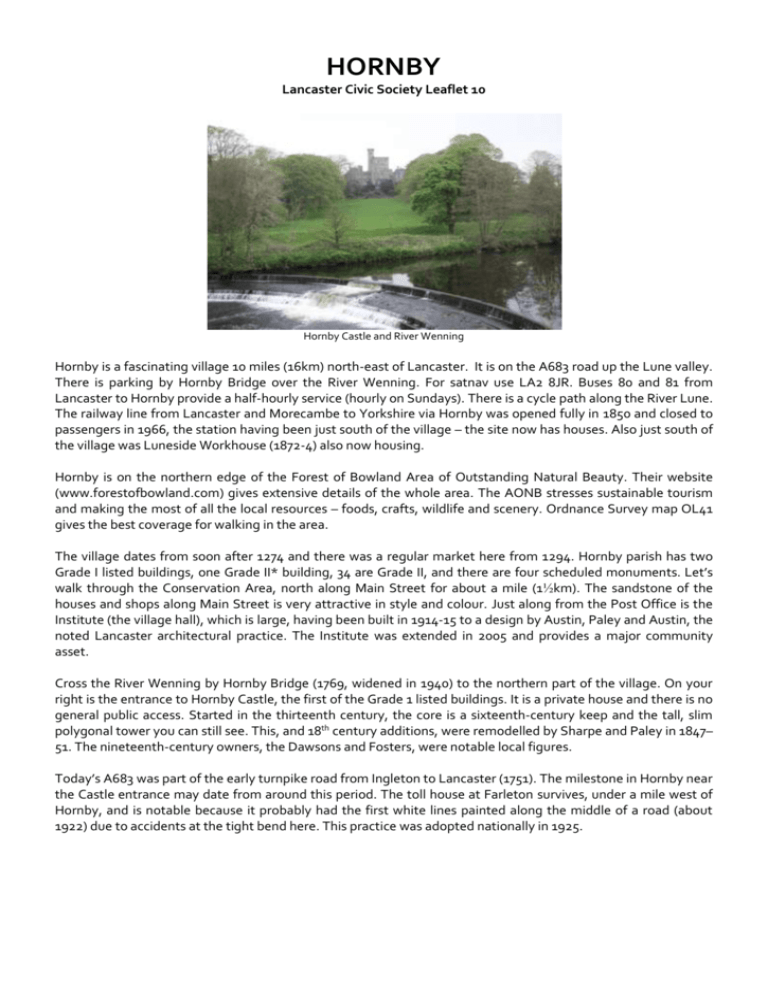
HORNBY Lancaster Civic Society Leaflet 10 Hornby Castle and River Wenning Hornby is a fascinating village 10 miles (16km) north-east of Lancaster. It is on the A683 road up the Lune valley. There is parking by Hornby Bridge over the River Wenning. For satnav use LA2 8JR. Buses 80 and 81 from Lancaster to Hornby provide a half-hourly service (hourly on Sundays). There is a cycle path along the River Lune. The railway line from Lancaster and Morecambe to Yorkshire via Hornby was opened fully in 1850 and closed to passengers in 1966, the station having been just south of the village – the site now has houses. Also just south of the village was Luneside Workhouse (1872-4) also now housing. Hornby is on the northern edge of the Forest of Bowland Area of Outstanding Natural Beauty. Their website (www.forestofbowland.com) gives extensive details of the whole area. The AONB stresses sustainable tourism and making the most of all the local resources – foods, crafts, wildlife and scenery. Ordnance Survey map OL41 gives the best coverage for walking in the area. The village dates from soon after 1274 and there was a regular market here from 1294. Hornby parish has two Grade I listed buildings, one Grade II* building, 34 are Grade II, and there are four scheduled monuments. Let’s walk through the Conservation Area, north along Main Street for about a mile (1½km). The sandstone of the houses and shops along Main Street is very attractive in style and colour. Just along from the Post Office is the Institute (the village hall), which is large, having been built in 1914-15 to a design by Austin, Paley and Austin, the noted Lancaster architectural practice. The Institute was extended in 2005 and provides a major community asset. Cross the River Wenning by Hornby Bridge (1769, widened in 1940) to the northern part of the village. On your right is the entrance to Hornby Castle, the first of the Grade 1 listed buildings. It is a private house and there is no general public access. Started in the thirteenth century, the core is a sixteenth-century keep and the tall, slim polygonal tower you can still see. This, and 18th century additions, were remodelled by Sharpe and Paley in 1847– 51. The nineteenth-century owners, the Dawsons and Fosters, were notable local figures. Today’s A683 was part of the early turnpike road from Ingleton to Lancaster (1751). The milestone in Hornby near the Castle entrance may date from around this period. The toll house at Farleton survives, under a mile west of Hornby, and is notable because it probably had the first white lines painted along the middle of a road (about 1922) due to accidents at the tight bend here. This practice was adopted nationally in 1925. Milestone Fountain, horse trough and Dawson monogram Almost next door is St Margaret’s Church, the other Grade 1 listed building. The unusual octagonal tower by the street – notice the twist in the tower – was built in 1514 by Sir Edward Stanley, 1st Baron Monteagle, who was also building Hornby Castle. The nave was rebuilt in 1817 and arcades and a clerestory were added by Paley, Austin and Paley in 1888–9. The polygonal apse is also unusual. There are painted panels of the Nativity on the reredos (1889) and stained glass in the east window and south chapel, both by Shrigley & Hunt of Lancaster – see the companion leaflet in this series on Stained Glass in Lancaster. Can you spot St Cecelia and the bee orchids in the chapel window (1907)? The organ case, reredos and altar are by Gillow – see the leaflet on Gillows of Lancaster. Colonel Foster of the Castle paid for these works. Carved slabs and fragments of Anglo-Saxon crosses are displayed in the church. Across the street is St Mary’s RC church. The presbytery dates from 1777 and the church from 1820. The Tabernacle in mahogany is by Gillow. Nearby is the War Memorial (1921) designed by Paley on the base of a mediaeval market cross. Note the mosaics by Maggy Howarth outside the butcher’s shop, across the street. Up the hill and passing the swimming pool on your left, take the left fork signposted to Gressingham till you reach (but do not cross) Loyn Bridge (1684, a scheduled ancient monument) over the River Lune. To the right of the road is Castle Stede. This is a Norman motte-and-bailey castle (built soon after 1086) and is a scheduled ancient monument. Many of these have been demolished or incorporated into later stone castles. One of several along the Lune valley, Castle Stede remains much as it was except for the wooden palisade that added to the natural defence provided by the steep slopes. Next to it is a surviving World War II pillbox. Defending this eastwest route along the River Lune has often been important. You can now retrace your steps back to the village. Or you can take a walk along the river for about 2 miles (3km). A path follows the River Lune on its south bank (the river is on your right) and when the Wenning meets the Lune the path turns east (to your left) and ends up back in Hornby. The Butcher’s mosaic St Mary’s Presbytery and Church The road to Castle Stede Text and photographs – Gordon Clark. www.lancastercivicsociety.org Published by Lancaster Civic Society (© 2014). www.citycoastcountside.co.uk
